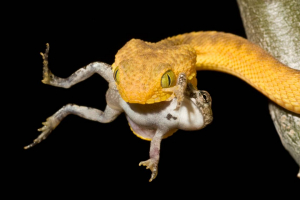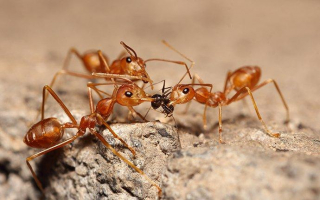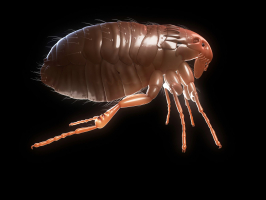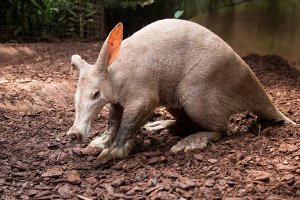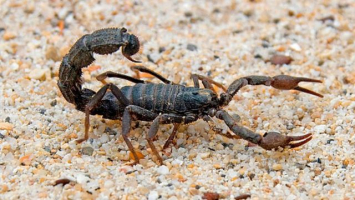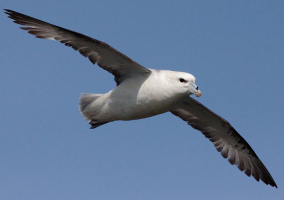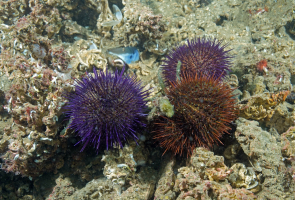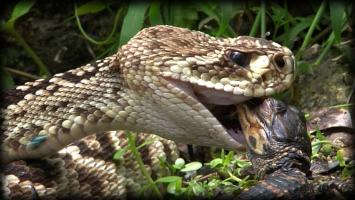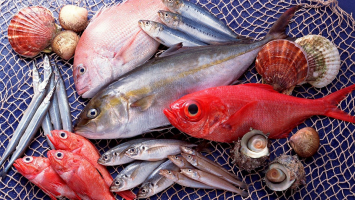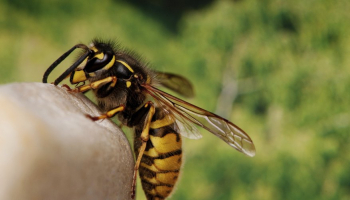Top 6 Predators of Lionfish that Eat Lionfish
A venomous predatory fish called a lionfish is often found in the warm waters of the Pacific and Indian seas. Recently, the Atlantic Ocean has also seen a lot ... read more...of these lionfish. It features a body covered in a pattern of white stripes and comes in hues like brown, maroon, or red. However, this is not the most distinctive feature about them. Venomous spines protrude from the top and bottom of lionfish as well. These sharp bristles pierce the skin and release venom that may result in discomfort, bruising, and swelling. Continue reading to discover more about the predators of lionfish that eat lionfish!
-
The Atlantic Ocean has seen an increase in lionfish populations, despite the fact that this is not where they are native to. Lionfish are now an invasive species in the Atlantic Ocean as a result. Since they have no predators in those waters, they are proliferating more quickly and devouring a large number of the local fish. Some marine researchers have attempted teaching sharks to consume lionfish as a way to combat this.
In the Indo-Pacific Ocean, lionfish are naturally preyed upon by sharks. Lionfish won't multiply too much if sharks in the Atlantic Ocean begin to hunt them as well. According to some experts, lionfish venom either doesn't effect sharks very much or they are immune to it. It is also known that sharks may consume other poisonous species, including pufferfish and stingrays. By training sharks in the Atlantic Ocean to consume lionfish, researchers are hoping that eventually these powerful predators would start going after lionfish. It could take some time, though, for this to become the standard.
Sharks that feed primarily on mollusks and crustaceans have dense, flattened teeth that are used for crushing; sharks that primarily consume fish have needle-like teeth that are used for gripping; and sharks that primarily consume larger prey, such as mammals, have pointed lower teeth that are used for gripping and triangular upper teeth with serrated edges that are used for cutting.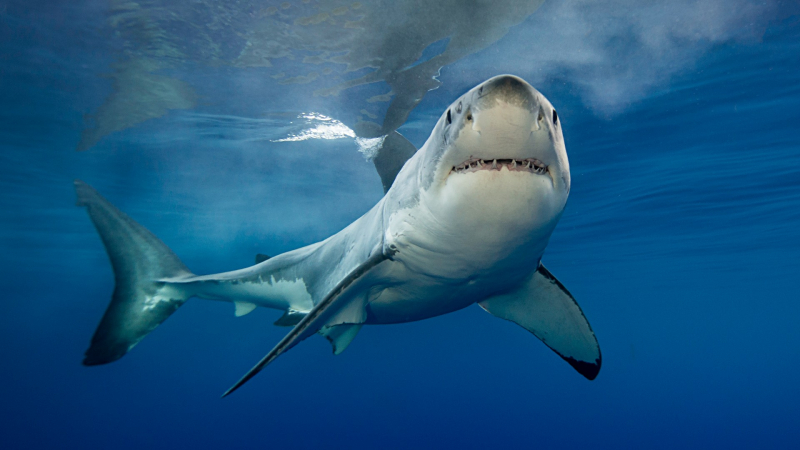
Photo: Live Science - Shark 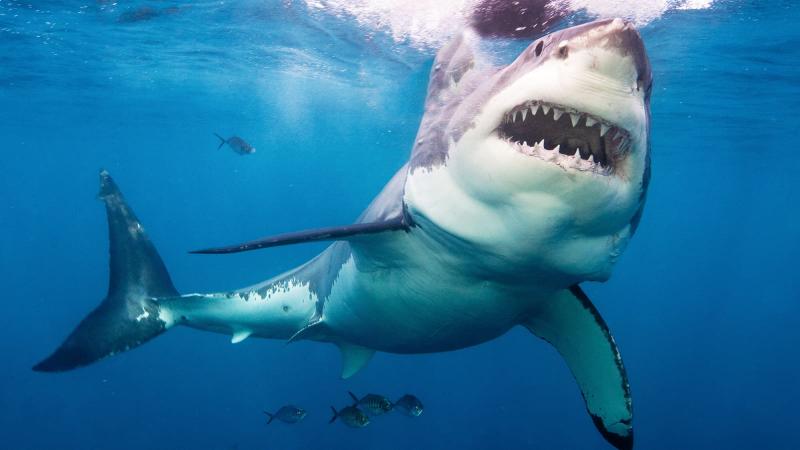
Photo: CNBC - Shark -
Any of the roughly four species of extraordinarily long and slender gasterosteiform fishes that make up the genus Fistularia are cornetfish, often known as flutemouth. Beyond the forked tail fin at the posterior end of the body, a long filament projects forth from the end of the backbone. These holes in the filament, which is frequently as long as the fish's body, may help the fish identify prey. Together, the cornetfishes' bodies and filaments are measured; the biggest cornetfishes may reach lengths of 2 meters (6.6 feet).
In the Atlantic, Pacific, and Indian oceans' temperate and tropical nearshore marine environments, which are distinguished by soft bottoms like sand flats, coral reefs, and sea grasses, you can find them. The cornetfish is one of the lionfish's natural predators in these waters. By consuming the lionfish, they assist in reducing their number and hinder the growth of the poisonous fish. Cornetfish have large snouts and very lengthy bodies. They can detect the presence of prey because to the sensitivity of their long tail. They pursue their unwary prey before attacking them. Nearer to the ocean floor, where numerous lionfish frequently swim, cornetfish typically search for prey. Cornetfish also consume other tiny fish, crabs, and squid in addition to lionfish.
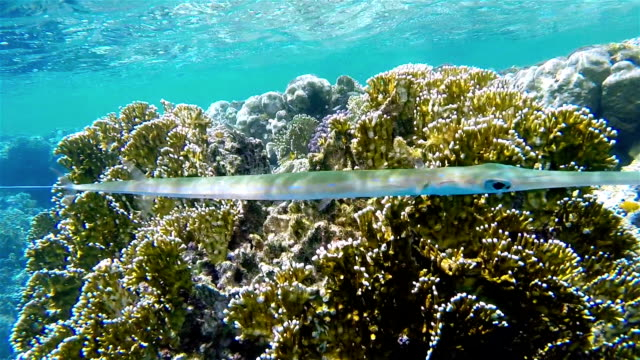
Photo: iStock - Bluespotted Cornetfish On Coral Reef Maldives 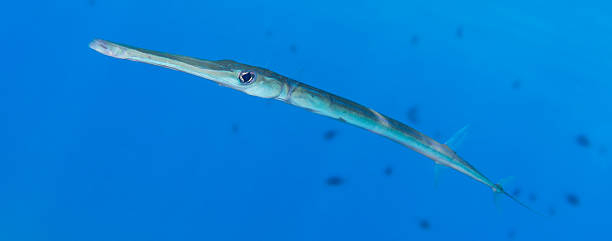
Photo: iStock - Cornetfish -
Groupers are one of the common predators of lionfish that eat lionfish.
In the Indo-Pacific Ocean, groupers naturally prey on lionfish, just like sharks do. Groupers come in a variety of varieties, but they may often be distinguished by their huge, "sad" lips. Additionally, they possess very sharp tooth plates that they employ to crush their prey. Lionfish can be consumed by groupers if they wait for the appropriate opportunity to strike so that the poisonous spines won't pierce them. The grouper has little trouble swallowing the fish's poison since stomach acid can dissolve it.
In order to reduce the number of lionfish, scientists are attempting to encourage groupers in the Atlantic Ocean to attack more of them. Successful studies have demonstrated that groupers in the Caribbean may develop into a lionfish's natural predator. Researchers also discovered that lionfish populations are substantially less in oceanic regions with large numbers of groupers. However, because groupers are a preferred fish for human consumption, there are fewer of them in the water. In order to concentrate on reducing the lionfish population, scientists are hoping that groupers won't be overfished in the upcoming years.
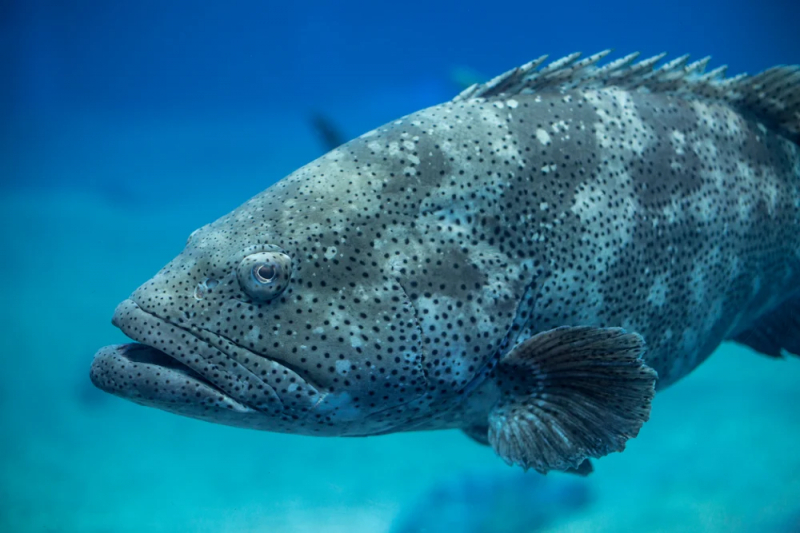
Photo: American Oceans - Atlantic Goliath Grouper 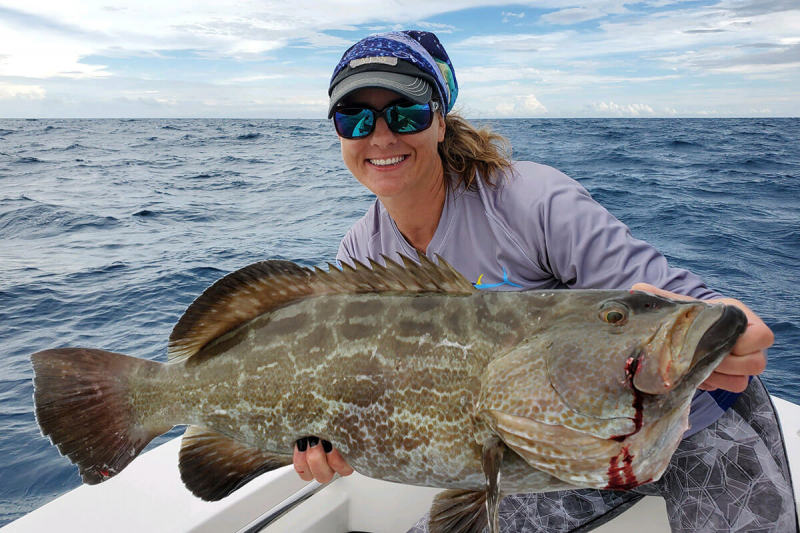
Photo: Florida Sportsman - Types of Grouper in Florida -
Anglerfishes are another name for frogfish. Almost all tropical and subtropical oceans and seas are home to them, with the Mediterranean Sea being the main exception. They can grab prey because of their well-camouflaged skin, which also allows them to avoid being seen by other fish. Even some frogfish species can alter their color! The smaller fish have little hope of escaping once the frogfish have come near enough to their target.
Crustaceans, other fish, and even other frogfish are eaten by them. The frogfish follows possible prey with its eyes once it is first seen. Then, the frogfish starts moving its illicium such that the esca replicates the movements of the animal it resembles when it is around seven body lengths away. The frogfish swims slowly as the prey approaches in order to get ready to attack; sometimes this includes approaching the prey or "stalking," and other times it only entails altering its mouth angle. The actual capture is achieved by the abrupt opening of the jaws, which increases the size of the mouth cavity by a factor of up to 12, drawing the prey and water into the mouth.
The frogfish's method of assault against lionfish is particularly useful. The lionfish is taken by surprise and unable to protect itself with its poisonous spines since it is unable to notice the frogfish's camouflage.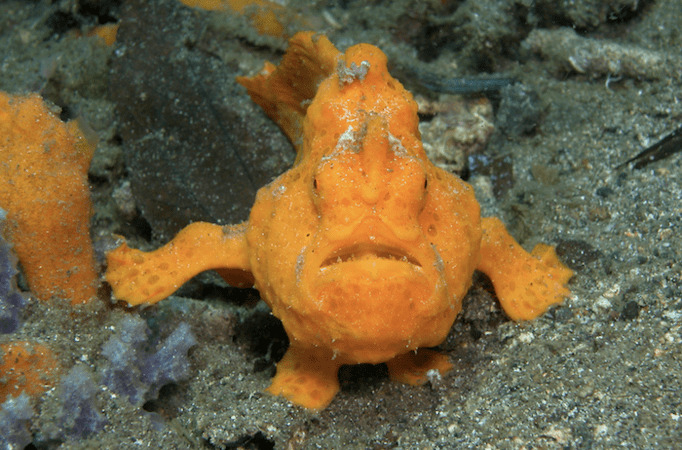
Photo: Two Fish Divers - Frogfish 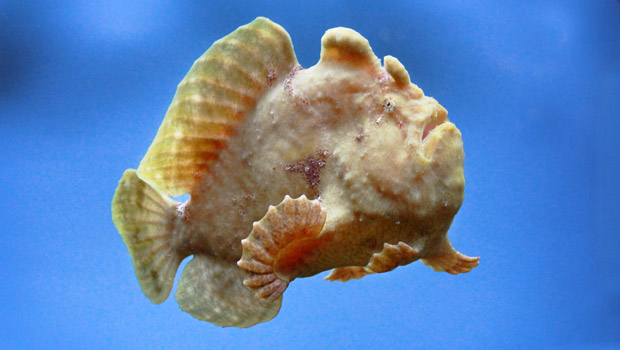
Photo: Waikiki Aquarium - Frogfish -
The majority of eels dig into sand, mud, or between rocks to survive in the shallow waters of the ocean. Since the majority of eel species are nocturnal, they are seldom observed. They can appear to coexist in pits known as "eel pits." On the continental shelves and along the slopes as deep as 4,000 meters, some species of eels also exist (13,000 ft). Only Anguilla residents live in fresh water on a regular basis, yet they also go back to the ocean to reproduce.
The one-jawed eel (Monognathus Ahlstrom), which is 5 cm (2 in) long, and the slender giant moray, which is 4 m (13 ft) long, are both elongated fish. For big eels like the moray eel, lionfish are no match. Large eels frequently have robust jaws that can open wide and highly sharp teeth. These are what they employ to seize and hurt their victim. They may then begin to crush and consume their victim using their powerful teeth and jaws once it has been rendered weak.
Another lionfish predator in the Atlantic Ocean that scientists are teaching to start eating lionfish is large eels. But because the lionfish has so many poisonous spikes on it, it might be challenging for the eels to attack and consume them without getting wounded. Large eels in the Atlantic Ocean may eventually be able to assist in lionfish population decline, but this is uncertain at the moment.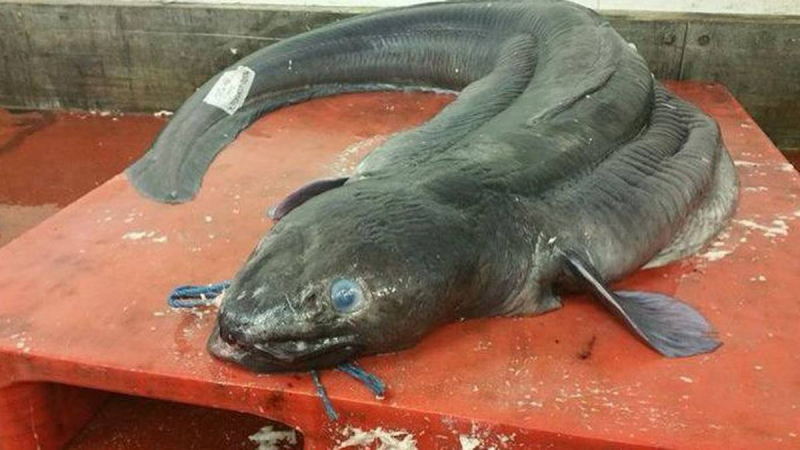
Photo: NZ Herald - Giant 59kg eel Video: Caters Clips - Giant Eel Rescued From River -
One of the predators of lionfish that eat lionfish is scorpionfish.
Due to its propensity to reside amid rocks along the seafloor, bottom-dwelling scorpionfish have also been referred to as rockfish or stonefish. Scorpionfish excel at being passive predators. Scorpionfish exclusively hunt at night and rest in cracks during the day. Before striking at unaware prey swimming past, they would hide in the crevices of rocks or reefs. Small fish, crabs, and snails that also reside on coral reefs make up their food. The large mouth of a scorpionfish enables it to swiftly suck and swallow food entire in a single bite. In addition, before consuming its meal, scorpionfish may stun them with their poison.Although there are still few predators of scorpionfish, huge snappers, rays, and sharks have been observed pursuing the fish.
Like lionfish, scorpionfish are found in the Indo-Pacific Ocean and are protected from predators by poisonous spines. Both lionfish and scorpionfish are subspecies of the Scorpaenidae family, which they both belong to. Because they are so similar, it is thought that scorpionfish may be somewhat resistant to the venom of lionfish. As a result, larger scorpionfish have an edge while pursuing lionfish. Some scorpionfish species, such the humpback scorpionfish, have the ability to camouflage into their environment and prey on unaware lionfish.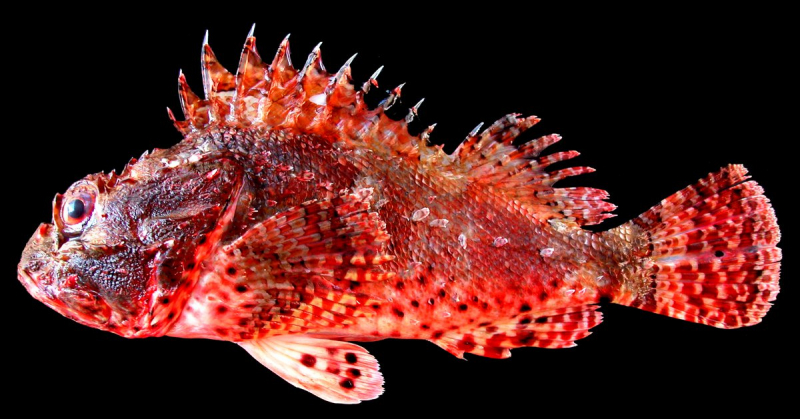
Photo: Australian Museum - Eastern Red Scorpionfish 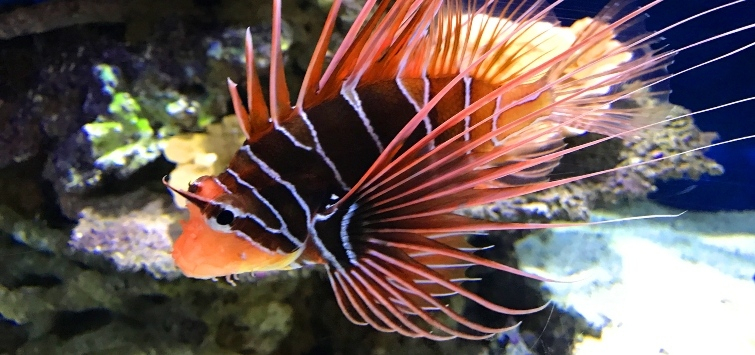
Photo: TFH Magazine - Venomous Beauties: A Look at Scorpionfishes








